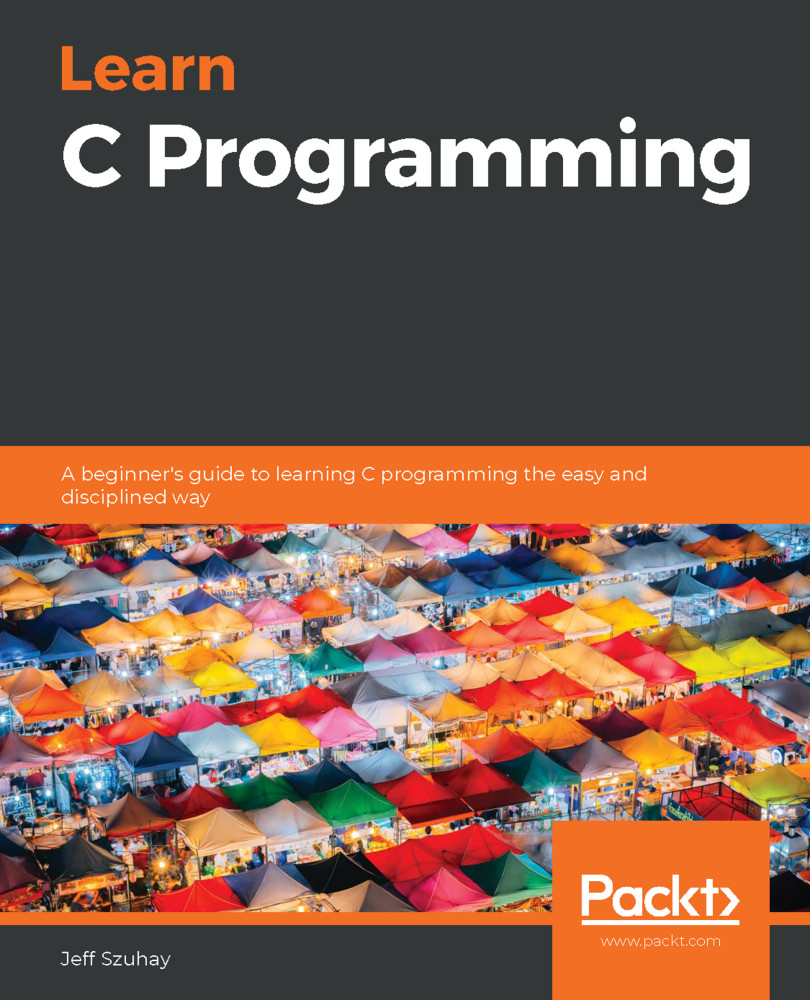In this chapter, we began with a very simple C program and explored C statements. We expanded and changed our program through the use of functions. We saw how to define functions, call them, and declare function prototypes. Lastly, we saw how we can structure our programs using a top-down or bottom-up approach when implementing our program.
Thinking about solving a problem in terms of breaking it down into smaller pieces and solving each of them via functions is an essential skill to be able to solve complex problems in any programming language.
As we explore the remainder of the C syntax, we will demonstrate each feature through functions and further explore how we can change functions to make our programs either more appropriate to our problem or to make it easier to understand how the problem is being solved.
In the next chapter, we will begin to develop an understanding of data types. The data type determines how to interpret a value and what...


